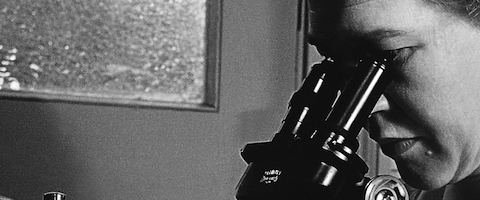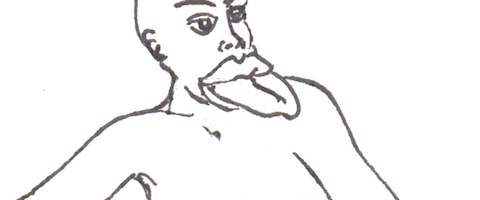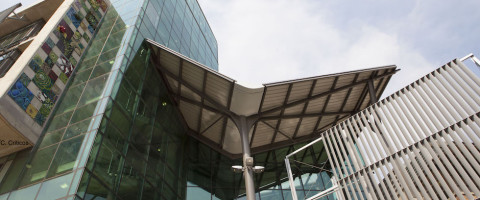Brother Guy Consolmagno is very Catholic. His faith is catholic too, insofar as the word literally means universal. And it would be just fine, the Vatican astronomer says clear and often, for alien life to share in it. As he told The Guardian in 2010, “Any entity—no matter how many tentacles it has—has a soul.” Asked routinely whether he would baptize an extraterrestrial, Consolmagno’s habit is to demur: “Only if she asks.”
A polemical cottage industry runs on religion, naturalism, and the war between their houses. All the same, many men and women worship on weekends and return, come Monday, to telescopes, spectrometers, and flow cytometers. Often this requires some clever compartmentalization: imagine particles caught in crisscrossed electromagnetic fields of the kind used to isolate antimatter, as if allowing science to touch faith would produce an especially energetic kaboom. In that spirit, William Saletan pointed out in Slate last year that while Young Earth Creationism can’t pass scientific muster, some Young Earth Creationists do leave belief at the laboratory door. But for other researchers, faith is never especially far from the front burner. The most striking are probably those who practice—for a living—both Catholicism and astronomy: the stargazers of the Holy See.
Demographically, astrophysics isn’t a notably intuitive choice of field for contemporary worshippers. Physicists and astronomers are, according to a 2009 poll by the Pew Research Center, even less likely to express belief in God than the scientific community at large, edging out geoscientists by a percentage point of incredulity. Still, the Vatican maintains an arm dedicated to astronomical research. Though founded in something of a defensive crouch, designed to illustrate Catholicism’s comfort with the sciences, the Vatican Observatory left apologetics behind a long time ago. While much of the public still imagines a Church allergic to physics, its astronomers see the dynamic running in the opposite direction. “If we have a mission at the Observatory,” Consolmagno told me, “it’s to remind our fellow astronomers that this stuff is supposed to be fun.”
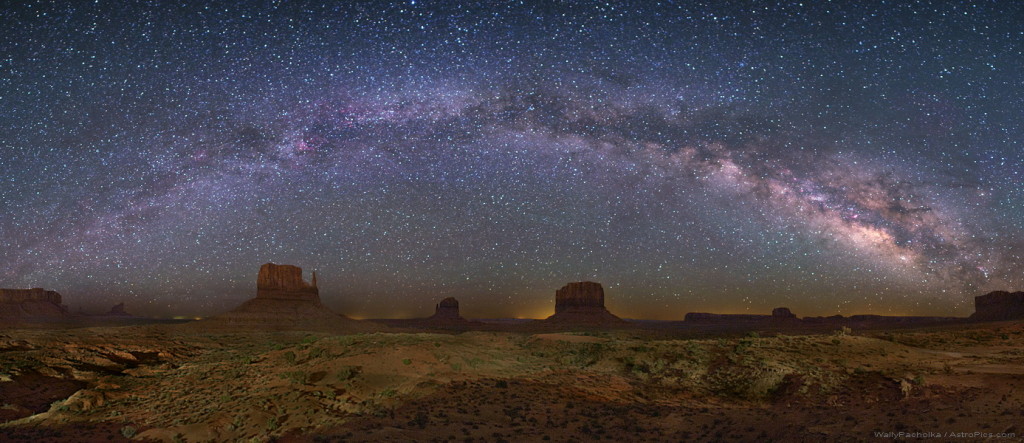
Atop Arizona’s Mount Graham, the Large Binocular Telescope and the Heinrich Hertz Submillimeter Telescope share a peak with the Vatican Advanced Technology Telescope (VATT), operated by the Jesuit astronomers of la Specola Vaticana. The instruments and their respective operators rub shoulders just fine by all accounts, though in an unfortunate coincidence that’s fueled more than a little conspiracy theorizing, one of the Large Binocular Telescope’s instruments is named Lucifer. The acronym is awkwardly adapted from “Large Binocular Telescope Near-infrared Utility with Camera and Integral Field Unit for Extragalactic Research.” A University of Arizona spokesman told Popular Science in 2010 that no offense was meant by the name: “Lucifer just sounds cool.”
For what it’s worth, Lucifer—literally “the morning star”—has always been an astronomically charged figure in the Christian imagination. Milton gave a famously telescopic description of the devil’s armor in Paradise Lost:
his ponderous shield
Ethereal temper, massy, large, and round,
Behind him cast; the broad circumference
Hung on his shoulders like the Moon, whose Orb
Through Optic Glass the Tuscan Artist views…
This Tuscan, of course, is the astronomer whose 17th-century condemnation by the Catholic Church permanently scarred the faith’s scientific reputation – Galileo Galilei.
Apocryphally at least, Galileo responded to the Church’s geocentric judgment with one of history’s more beautiful statements of scientific fact: eppur si muove, “and yet it moves,” a jab meant in reference to the sun-orbiting Earth. The incident is still something of a sensitive topic for the Vatican Observatory, whose website has a page on the affair responding to such questions as whether Galileo was an atheist (no), whether he was trained by Jesuits (possibly), whether the Church was “anti-science” then (no), and whether the Church stands by its judgment of Galileo now (no). For an institution two millennia in age, the past is never dead, and hardly past. Not until 1992 did the Vatican make formal amends with that particular deceased Italian.
The Observatory—or at least its modern incarnation—was founded by Pope Leo XIII in 1891 to exorcise Galileo’s ghost, whose shadow long obscured Catholic contributions to astronomical research. The idea was, Leo wrote in his founding letter Ut Mysticam, to show that “the Church and her pastors are not opposed to true and solid science, whether human or divine, but that they embrace it, encourage it, and promote it with the fullest possible dedication.” The Observatory would both highlight and further the Church’s scientific achievements. These are easy enough to rattle off, though the Observatory’s former director Father George Coyne told The Baltimore Sun in 2007 that he preferred not to: “Today we don’t preach that. We just do our work.”
Coyne, whose studies focused on cataclysmic variable stars, emphasized in a phone conversation that the Observatory’s workflow doesn’t differ much from that of other research institutions (there is, it should go without saying, no papal or biblical veto on research directions). But the backing of Holy Rome does offer certain advantages. For one, the Observatory’s staff of 16 Jesuits is largely exempt from what Coyne called “the sociology of doing science,” such as the need to wrangle for tenure or compete for promotions, or the pressures of publish-or-perish. As a result, the Observatory enjoys one of the most essential and basic scientific freedoms: the right to do unglamorous research. As Coyne told me, “We don’t have to do—what will I say—the ‘gee whiz’ projects.”
Thanks to the financial support of the Vatican, the Observatory also stands unusually independent from ordinary grant cycles and funding streams. “We wind up doing orphaned science,” Consolmagno said, “the kind of science everybody knows somebody should be taking care of but that nobody’s willing to sponsor.” In the case of its meteorite collection—Consolmagno specializes in meteoritics—the Observatory started collecting data just in case someone might eventually want it. Its researchers can also afford to do science slowly. Very slowly, in some cases: as Consolmagno put it, “We’ve got a guy who’s been doing nothing but measurements of peculiar stars for twenty years.”
But control of the 1.8-meter Vatican Advanced Technology Telescope, built in 1993, might be the biggest perk. “A telescope of that size and that quality is very much in demand,” Coyne said, and the Vatican’s astronomers have it almost entirely to themselves. While they parcel out some time out for collaborations with other institutions—the University of Arizona has a 25% share of the VATT’s observing time, while the University of Notre Dame has a contract for 20 nights per year—the rest belongs to the Observatory. In astronomy, it’s a luxury to point a telescope not knowing what you may find. With their own instrument, on their own time, Consolmagno said, “It’s easier to have good luck.”
The VATT was a strategic acquisition that came out of the Observatory’s longstanding relationship with the University of Arizona, which in the 1980s was developing a technique for mirror construction involving the rotation of liquid glass in a furnace. VATT’s mirror was the first built using the approach, called spin-casting, but the university had no particular use for an instrument of that size. They offered it to the Vatican instead, which promised to raise funds for the device that would house it. “The best way to test it,” said Coyne, “was to put it into the telescope.” And he was more than happy with the mirror’s performance: “It’s one of the best imaging telescopes, still, in the world.”
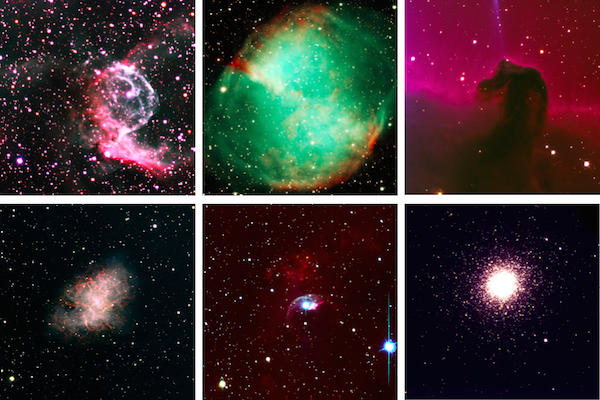
For all its astronomers’ enthusiasm, the Vatican Observatory’s scientific work tends to fly under the public radar, as does Catholicism’s comfort with modern science more broadly. Much of the news media was shocked last October to hear Pope Francis endorse evolution and the Big Bang, yet neither has been especially controversial in the Church for the last half-century, and the latter was theorized in its earliest form by an ordained Catholic priest. Instead, the Observatory catches attention for its more sensational musings about astrophysics — and no subject is more attractive, or more speculative, than astrobiology. When the Vatican starts talking about ET, a tidal wave of headlines follows.
In 2008, it was Observatory Director José Funes telling L’Osservatore Romano, “Just as there is a multiplicity of creatures on earth, there can be other beings, even intelligent, created by God. This is not in contrast with our faith because we can’t put limits on God’s creative freedom.” In May of 2014, it was Pope Francis giving a homily in which he mused, “If—for example—tomorrow an expedition of Martians came, and some of them came to us, here… Martians, right? Green, with that long nose and big ears, just like children paint them… And one says, ‘But I want to be baptized!’ What would happen?”
Considering that the first extra-solar planet was discovered in 1992, the question is surprisingly old. Neil deGrasse Tyson’s Cosmos: A Spacetime Odyssey opened on the case of Giordano Bruno, a 16th-century friar who dreamed of extraterrestrial messiahs redeeming alien worlds. He was executed, probably less for his cosmic pluralism than because he rejected—among other doctrines—the divinity of Christ. Religious imagination of other worlds is even older still, with more than a few spiritual traditions puzzling over what, precisely, it would mean to encounter life in the great Out There.
C.S. Lewis laid out one of the best-known Christian treatments of the subject in a 1958 essay called “Religion and Rocketry.” There were, he pointed out then, at least five questions that needed answering before the impact of extraterrestrial life on Christian faith could be worked through. He asked whether alien life exists, whether it is ensouled, whether it is “fallen” in the way that the doctrine of original sin holds humanity is, whether it was redeemed through Jesus Christ, and whether other methods of redemption are possible. The sticking point, of course, is that intelligent life is still a sample size of one. 57 years later, these questions remain, to say the least, speculative.
When we spoke, Coyne declined to guess at answers. “We’re in the early stages of this whole investigation,” he said. “Where’s the evidence?” Lewis had held that position too, writing, “If I remember rightly, St. Augustine raised a question about the theological position of satyrs, monopods, and other semi-human creatures. He decided it could wait till we knew if there were any. So can this.” But Consolmagno, while conceding that he had no more data than anyone else, expressed confidence (and excitement) about the prospect of life elsewhere in the cosmos. Why? “In science,” he said, “so often the better story turns out to be the better science.” Theorists, religious or not, do typically prefer their theories elegant. And in the case of astrobiology, Consolmagno, said, “A universe where we are utterly alone, a highly unlikely accident of chemistry, is not as good a story, is not as elegant a universe, is not as beautiful a way that things could be. I’m someone who will always go for more elegance, the better beauty – the better story.”
Whenever humanity dreams beyond Earth, faith follows. Buzz Aldrin, a Presbyterian, held a small communion in the Apollo Lunar Module. “In the one-sixth gravity of the moon,” he later recalled, “the wine curled slowly and gracefully up the side of the cup.” At the time, he read John 15:5 – “I am the vine, you are the branches. Whoever remains in me, and I in him, will bear much fruit; for you can do nothing without me.”
It’s easy to sound unhinged talking about either faith or extraterrestrials. Both habits come, in the public imagination, with special hats. But the Vatican Observatory isn’t very concerned on either front. It does its work; sometimes, it wonders evocatively out loud. I heard echoes of The Imitation Game — “Sometimes it’s the people whom no one imagines anything of, who do the things that no one can imagine” — when Consolmagno explained how his faith gives him the confidence to imagine and speculate. “You’re more willing to ask the crazy questions,” he said, “if you’re not afraid of being thought crazy.”
After all, the Church claims a catholic writ; it can hardly be expected to ignore the stars.

